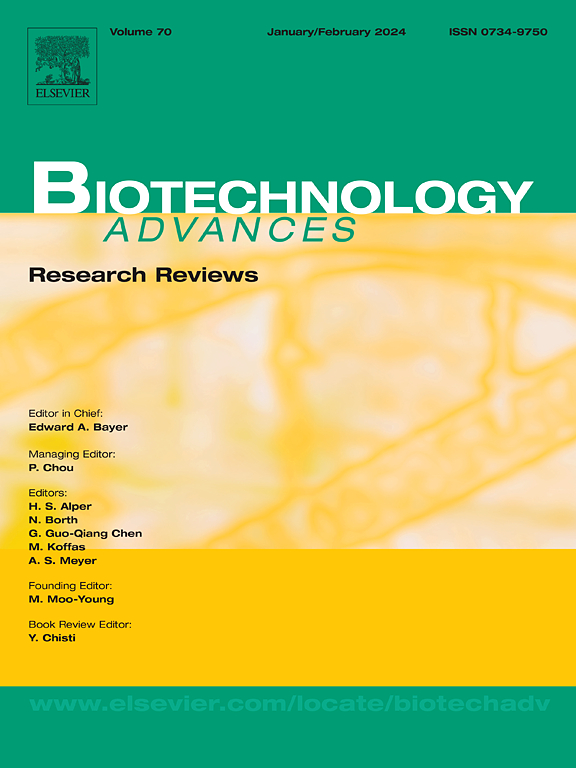黑曲霉高效异源蛋白表达的多维策略
IF 12.5
1区 工程技术
Q1 BIOTECHNOLOGY & APPLIED MICROBIOLOGY
引用次数: 0
摘要
微生物蛋白是一种很有前途的动物和植物蛋白替代品。黑曲霉(Aspergillus niger)是公认的安全微生物(GRAS),常用于异源蛋白的生产,但其表达效率受到多种因素的制约,包括基因转录、代谢通量分布、蛋白质折叠和分泌途径等。然而,由于不同蛋白质的不同性质,构建通用的黑曲霉底盘细胞以高效生产蛋白质仍然具有挑战性。随着合成生物学的进步,许多分子生物学工具和代谢工程策略被用来解决这些问题。本文从表达系统、分泌途径、代谢通量、智能发酵、多组学整合优化等5个方面综述了提高外源蛋白产量的最新进展。展望了黑曲霉高效、可持续地生产外源蛋白的前景。本文章由计算机程序翻译,如有差异,请以英文原文为准。
Multidimensional strategies for efficient heterologous protein expression in Aspergillus niger
Microbial protein is a promising alternative to animal and plant proteins. Aspergillus niger, a generally recognized as safe (GRAS) microorganism, is frequently used for heterologous protein production, although its expression efficiency is constrained by multiple factors, including gene transcription, metabolic flux distribution, protein folding, and secretion pathways. However, constructing universal Aspergillus niger chassis cells for efficient protein production remains challenging due to the diverse properties of different proteins. With advancements in synthetic biology, numerous molecular biology tools and metabolic engineering strategies have been employed to address these issues. This article summarizes and discusses the latest progress in enhancing heterologous protein production from five dimensions: expression systems, secretion pathways, metabolic flux, intelligent fermentation, and systematic optimization through multi-omics integration. Additionally, it prospects the efficient and sustainable production of heterologous proteins by Aspergillus niger.
求助全文
通过发布文献求助,成功后即可免费获取论文全文。
去求助
来源期刊

Biotechnology advances
工程技术-生物工程与应用微生物
CiteScore
25.50
自引率
2.50%
发文量
167
审稿时长
37 days
期刊介绍:
Biotechnology Advances is a comprehensive review journal that covers all aspects of the multidisciplinary field of biotechnology. The journal focuses on biotechnology principles and their applications in various industries, agriculture, medicine, environmental concerns, and regulatory issues. It publishes authoritative articles that highlight current developments and future trends in the field of biotechnology. The journal invites submissions of manuscripts that are relevant and appropriate. It targets a wide audience, including scientists, engineers, students, instructors, researchers, practitioners, managers, governments, and other stakeholders in the field. Additionally, special issues are published based on selected presentations from recent relevant conferences in collaboration with the organizations hosting those conferences.
 求助内容:
求助内容: 应助结果提醒方式:
应助结果提醒方式:


